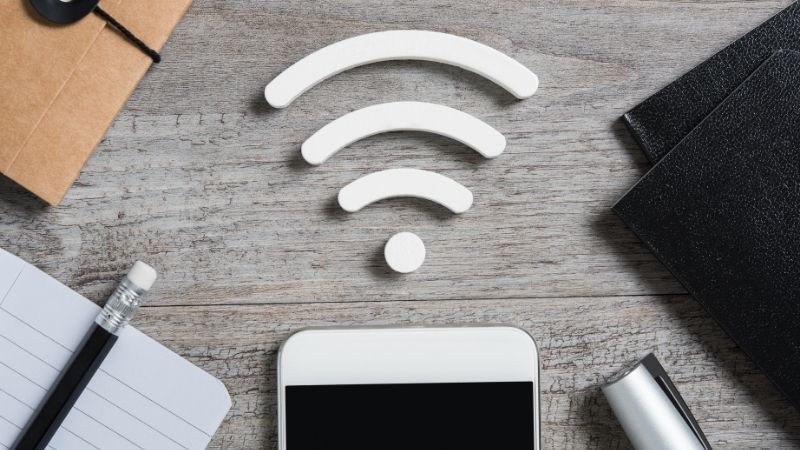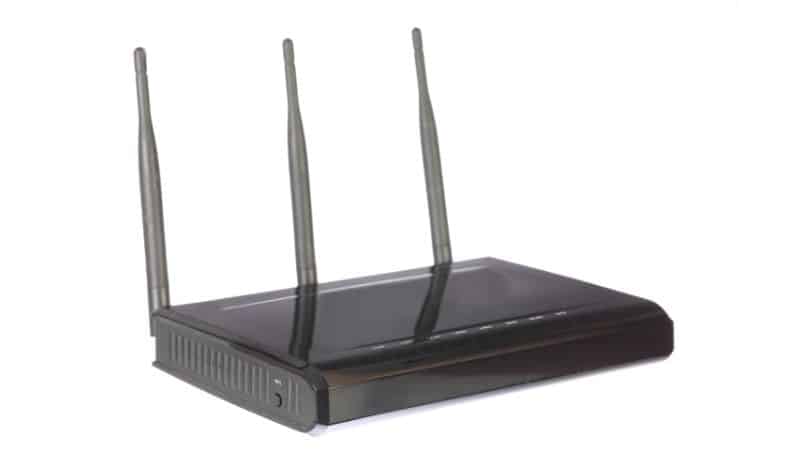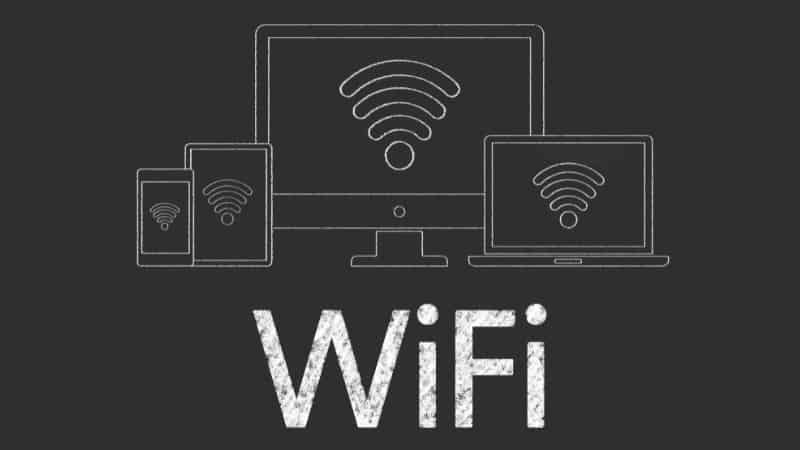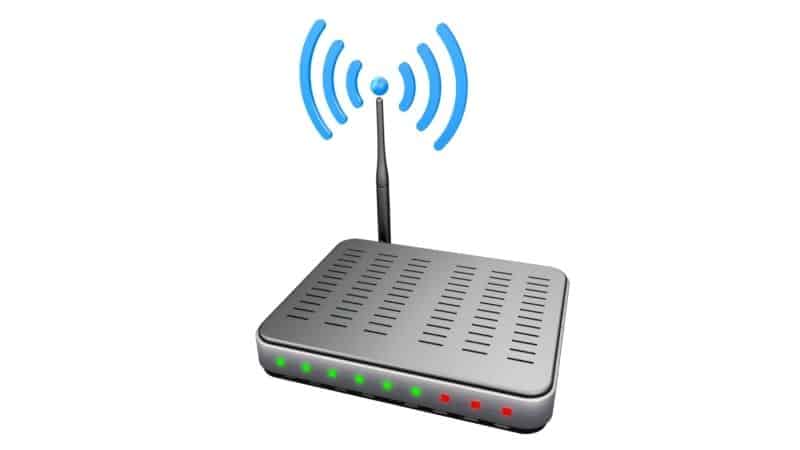How Does Wi-Fi Work?

Table of Contents
How does Wi-Fi work? Is it really free? What exactly happens when I connect my laptop to the router? How do I get rid of those annoying ads?
Wi-Fi is a wireless network connection that allows devices such as laptops, tablets, smartphones, etc., to communicate with each other or access the Internet via a local area network (LAN).
Prime Day is finally here! Find all the biggest tech and PC deals below.
- Sapphire 11348-03-20G Pulse AMD Radeon™ RX 9070 XT Was $779 Now $739
- AMD Ryzen 7 7800X3D 8-Core, 16-Thread Desktop Processor Was $449 Now $341
- ASUS RTX™ 5060 OC Edition Graphics Card Was $379 Now $339
- LG 77-Inch Class OLED evo AI 4K C5 Series Smart TV Was $3,696 Now $2,796
- Intel® Core™ i7-14700K New Gaming Desktop Was $320.99 Now $274
- Lexar 2TB NM1090 w/HeatSink SSD PCIe Gen5x4 NVMe M.2 Was $281.97 Now $214.98
- Apple Watch Series 10 GPS + Cellular 42mm case Smartwatch Was $499.99 Now $379.99
- ASUS ROG Strix G16 (2025) 16" FHD, RTX 5060 gaming laptop Was $1,499.99 Now $1,274.99
- Apple iPad mini (A17 Pro): Apple Intelligence Was $499.99 Now $379.99
*Prices and savings subject to change. Click through to get the current prices.
Wi-Fi has become ubiquitous in homes, offices, hotels, airports, cafes, restaurants, coffee shops, public spaces, etc. In fact, according to Cisco, over 2.5 billion people worldwide now rely on Wi-Fi networks.
If you're wondering how Wi-Fi works and what its benefits are, this article will answer all your questions. We will take an overview of the technology behind Wi-Fi and show you how it can be used in everyday life.
We’ll cover the basics of Wi-Fi networking and explain how it works. We'll also look at some of the most common uses for Wi-Fi, including connecting to the internet and sharing files between computers.
So let’s start by looking at the different types of Wi-Fi connections available today.
What Types Of Wireless Connections Are There?
There are three main types of Wi-Fi connections:
- Wired Ethernet Connection – This type of connection requires physical wiring from one device to another. It provides high-speed data transfer rates, but it is not suitable for mobile use because it is often impractical to install wires in places like apartments or office buildings.
- Wi-Fi Direct – This connection is similar to wired Ethernet but doesn’t require any physical cables. Instead, two devices can directly connect to each other without requiring a third party to set up the connection. For example, if you have a smartphone and a tablet, you can easily share content between them using Wi-Fi Direct.
- Personal Area Network (PAN) – A PAN is a small group of devices connected together wirelessly. The range depends on the number of devices involved but typically ranges from 10 meters to 100 meters.
The next step is to understand how Wi-Fi works.
What Is A Wireless Router?

A wireless router is a special piece of hardware that connects your computer to the Internet and is an important element of understanding how Wi-Fi works.
Wireless routers allow you to connect to the internet through the creation of a wireless network, and come in two main types:
- Wired-Only Routers
- Dual-Band Routers
Wired-Only Routers only allow computers to connect to the internet wirelessly. They don’t provide any additional services such as sharing printers or files.
Dual-Band Routers offer both wired and wireless connectivity. These routers allow you to share printers and files over the wireless network.
In addition, dual-band routers can even provide better performance than single-band routers.
The Basics Of Wireless Communication
To send information using wireless communication, you must have two things:
1. A source of power
2. An antenna
Power
In most cases, a wireless device uses electricity to transmit and receive information. This type of transmission is called RF (Radio Frequency), which refers to the frequency range used to communicate with other devices.
In order to generate RF energy, a device needs a power supply. For example, if you want to use your smartphone to talk to another phone, both phones need to be powered on.
If only one phone is turned on, then the second phone won’t work because it doesn’t have enough power to operate.
An RF transmitter generates RF energy by converting electrical current into electromagnetic radiation, while an RF receiver receives RF energy and converts it back into an electric current.
Antenna
An antenna is a metal rod shaped like a coil. It collects and transmits RF energy. Antennas come in many different shapes and sizes, but all antennas work by changing the shape of the magnetic field around them.
When an antenna is exposed to a magnetic field, it tries to align itself with the magnetic field.
When the antenna is aligned with the magnetic field, it has a maximum capacity to collect the energy, while an antenna that is not aligned with the magnetic field lines, its ability to collect the energy is reduced; the more powerful the magnetic field, the less the antenna can move.
Most antennas are designed to maximize the amount of energy collected when the antenna is aligned with a magnetic field.
How Does Wi-Fi Work?

Wi-Fi Technology Overview
Now that we know what power supplies and antennas are, let’s look at how they work together to create a wireless network.
A typical wireless network consists of three main components:
1. Access point
2. Client
3. Network infrastructure
Access Point
An access point is a wireless router that connects to the Internet. The access point provides a connection between your computer and the rest of the world.
Like any router, an access point also acts as a gateway for connecting computers to each other. In addition, it also allows computers to connect to the Internet.
Client
A client is a device that wants to connect to the Internet through an access point.
Network Infrastructure
A network infrastructure group of computers connected to each other. For example, in a home, there might be a server that runs a web page, a printer, and a modem. All these devices are connected to each other via cables.
This setup is known as a wired network. However, since this method requires wires, it is usually expensive.
Wireless networks avoid using cables altogether. Instead, they rely on radio waves to transfer data from one place to another.
This means that no physical connections are needed. As long as two or more devices are within range of each other, they will automatically “talk” to each other.
To make sure that everything works correctly, every device must be able to see the others, and to do this, each device must have an address. This way, everyone knows where to send their information.
To get an address, a device must first find out which area it belongs to. Each area has a unique identifier called an IP (Internet Protocol) number.
Once you know the IP number, you can use it to contact the correct computer.In most cases, the easiest way to identify an IP number is by looking up the address on a website.
For example, if you want to visit www.google.com, you type www.google.com into your browser.
The browser then sends a request to Google’s servers. Google’s servers respond by sending back the IP address of www.google.com.
You now know the IP address of www.google.com, so you can tell your computer to go to that site.
Wi-Fi Signal Strength

A typical home Wi-Fi system consists of a central device known as an Access Point (or AP) connected to several client devices such as laptops, tablets, smartphones, etc. The AP acts as a hub, connecting these devices together over a local network.
To create a secure connection between two devices, the AP needs to broadcast a signal that identifies itself and tells the clients where to connect. This process is known as authentication. Once authenticated, each device can exchange data securely.
To do this, the AP sends out a series of radio waves. These waves bounce off objects in their path and return to the AP. As the waves travel through the air, they pick up information from nearby objects.
In particular, they pick up information about the strength of the signals bouncing back. This is known as RSSI (Received Signal Strength Indicator).
RSSI is measured in dBm (decibels relative to 1 milliwatt) and ranges from -110dBm to +20dBm.
A value of 0dBm means there is no signal present. Negative values mean the signal is weaker than the noise level. Positive values mean the signal is stronger than the noise.
There are two ways to measure the strength of a signal. One way is by measuring the power of the received signal.
Another way is to measure the ratio of the received signal to the background noise. Both methods give similar results, so we will focus on the latter.
You may notice that most people refer to the strength of a Wi-Fi signal as being either strong or weak. However, the actual measurement is done using decibels.
To convert to decibel units, simply multiply the RSSI by 10 and add 20. So, for example, an RSSI of -70dBm would become 70dBm.
Final Thoughts
Understanding the basics of Wi-Fi doesn’t have to be overly complicated, and a good, basic understanding can help you to appreciate your system, as well as be more capable of troubleshooting and problem-solving in the event that something goes wrong in your Wi-Fi system.
